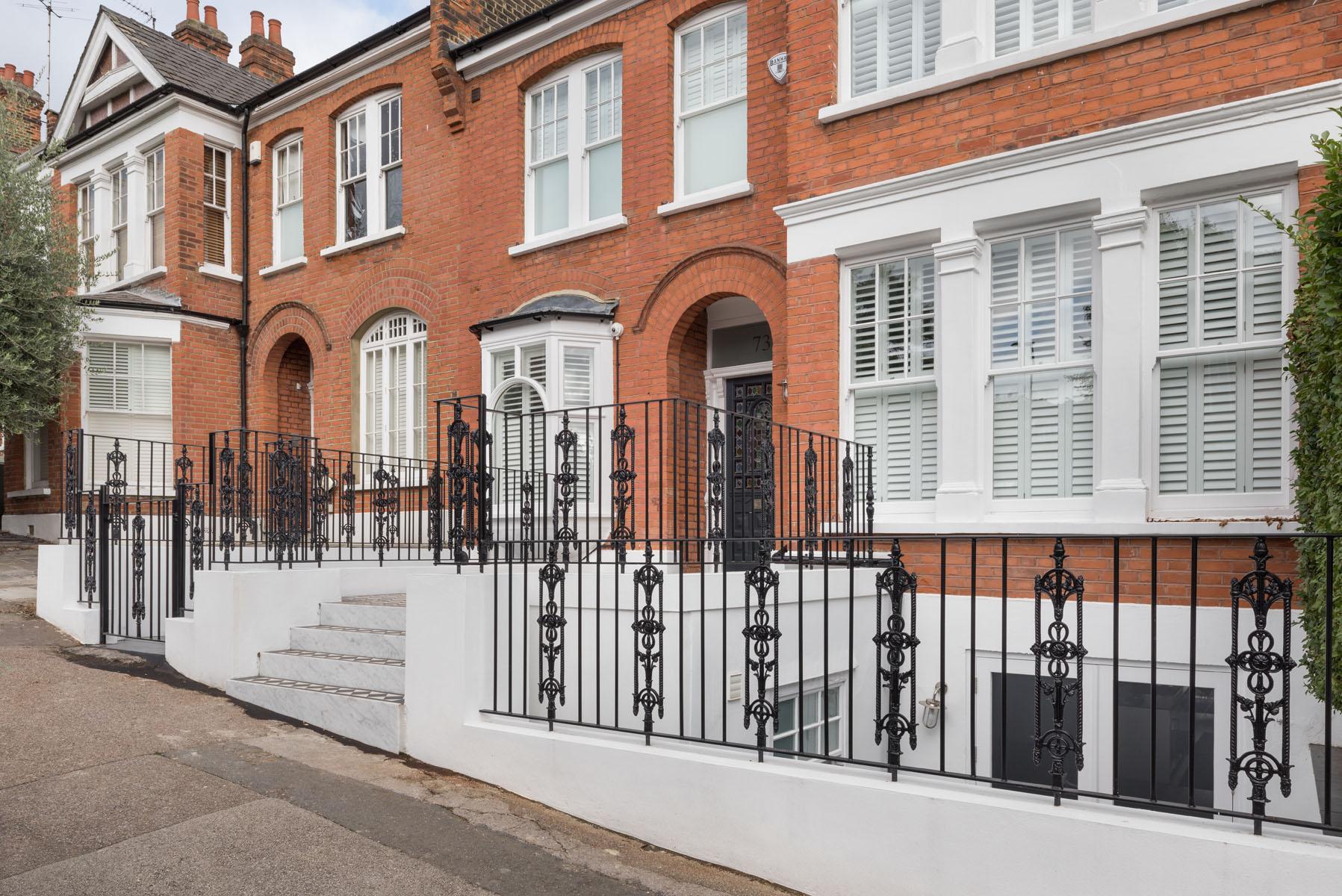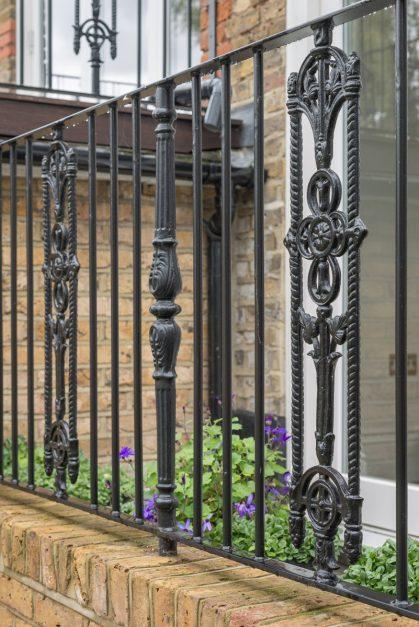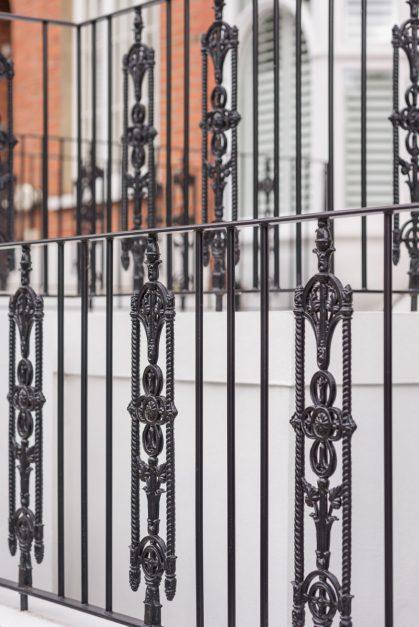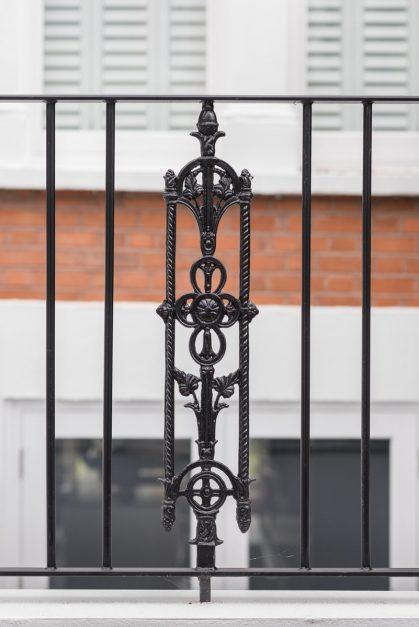
Photography by Peter Savage
Decorative metalwork helps to define the character of many period homes, adding charm and splendour. It’s no surprise then that when homeowners are looking to make changes to these properties, they want to ensure any railings, balusters or stairways match the style. As specialists in period metalwork, we’re always looking to ensure any metalwork is as accurate to original designs as possible, including using centuries old patterns. But occasionally it is necessary to make the odd tweak to designs to ensure they comply with modern safety standards. That was a challenge we faced on a recent installation in North London.
Design Challenges – North London Home
The property we were working on was a beautiful Edwardian mid-terrace spread over three storeys. The home already featured raised ground and first floor balconies, and the homeowners were looking to add a further roof terrace above a flat roof on the top floor. They also wanted to upgrade the front exterior of the house in a style befitting the property including pattered black and white floor tiles.
The existing railings were a mixed bag with plain straight railings installed on the front and first floor terrace and wooden rails on the ground floor balcony. We worked with the owners to create a consistent railing design which could be used across both the front and rear exterior and was more in keeping with the property’s age.
As we’ve discussed, the Edwardian age metalwork shows clear influences from the Art Nouveau and Arts and Crafts movements with lots of curves and natural elements. As a result, decorative railing panels are a common feature of this era of design and these were clearly visible outside other properties on the road.
The challenge when working with railing panels is that they can fall foul of the so called “100 mm sphere rule” within the Building Regulations. This essentially means there can be no gaps anywhere on a balustrade or balcony railing that are greater than 99 mm in any dimension (preventing a 100 mm ball from passing through at any point). Ornate railing panels typically taper in to a single point near their top and base and if put together in a run, this will often mean the gap in these areas will be too large.
To work around this, we typically separate the panels with two or three straight balusters. After spending some time looking through different options, the owners selected a beautiful design with a floral interior and piped edges. This design was used for all of the wrought iron railings across the front and rear and was separated with straight balusters with a classic circular footprint. For the rear balconies we also incorporated wrought iron newel posts with a simple central decoration.
“While we contacted and considered a number of cast iron specialists in connection with the replacement of railings for our home, it was apparent from the outset that BSC were a category apart. The owner of the company, Antonia Harding, devoted personal attention to every aspect of our project, travelling miles from her home to conduct site surveys, identifying challenges and working with us to deliver a highly bespoke product which was in keeping with the brief while meeting the challenges of modern day building regulation and safety requirements. All questions were answered patiently and the installation team were also polite and helpful. We are very pleased with the uniformity and quality of the end product.”
Gayatri Desai – Homeowner
We created CAD designs for all the railings and balusters. Once these were agreed, we got to work casting the balusters and top rails and crafting them into the final railing panel, before sending them to site to be installed. Whilst we offer a powder coating service, these panels were delivered to site without a finish and were hand painted by the installers.
The finished metalwork really completes the exterior appearance of the building, looking like they’ve always been a part of the building.
Looking to add some wrought or cast iron metalwork to your own home? Take a look at some of the options in our gallery, then get in touch and let our specialist team help you make it a reality.










